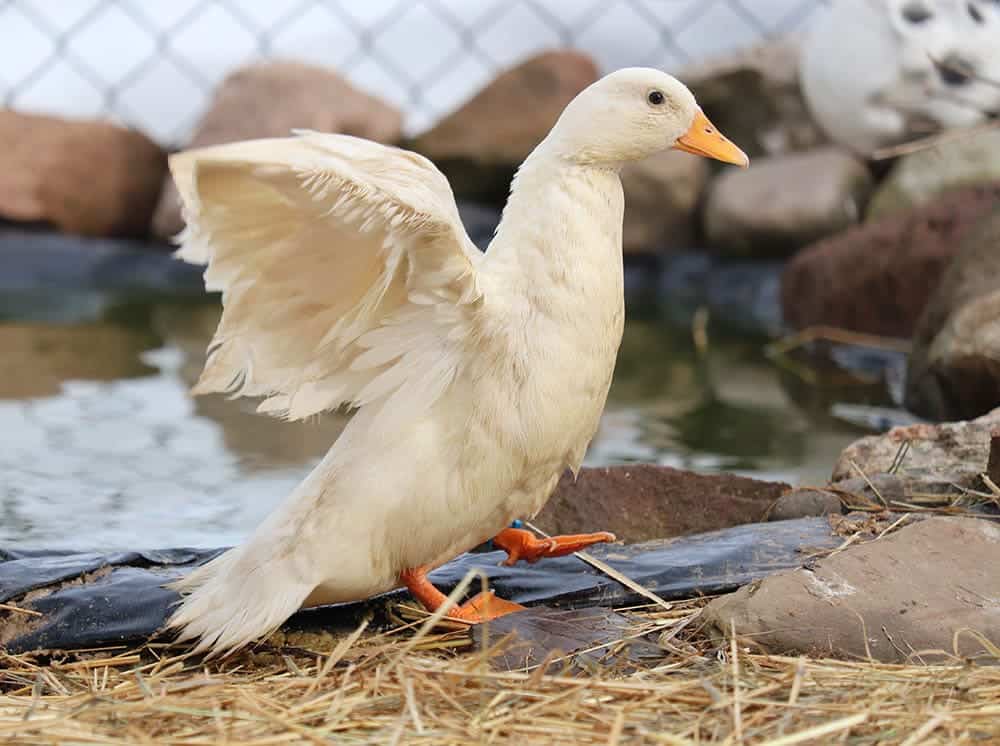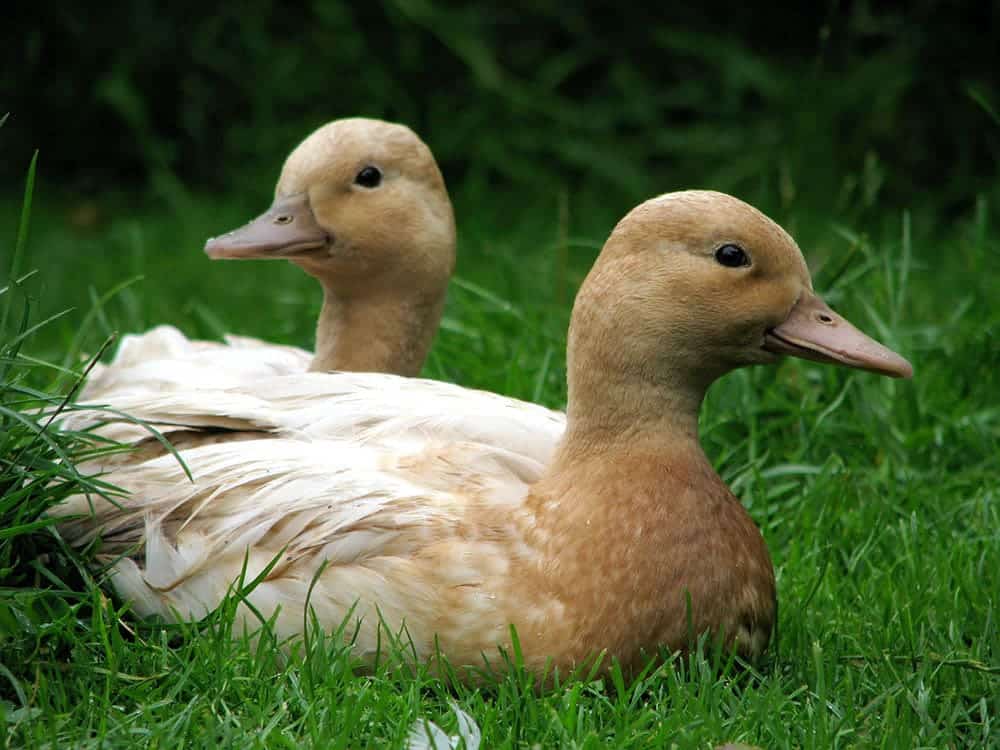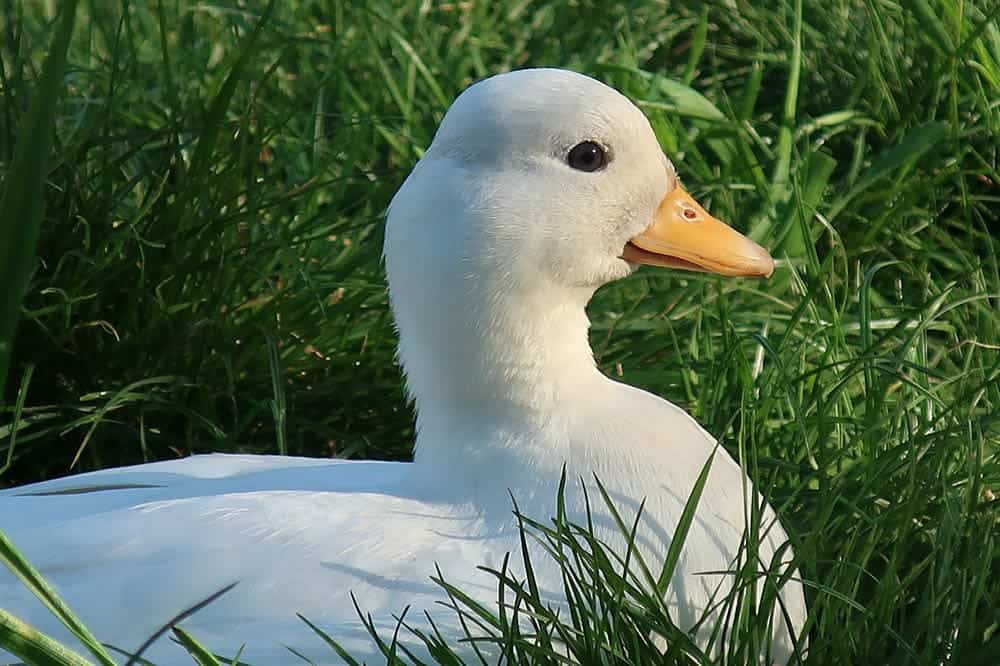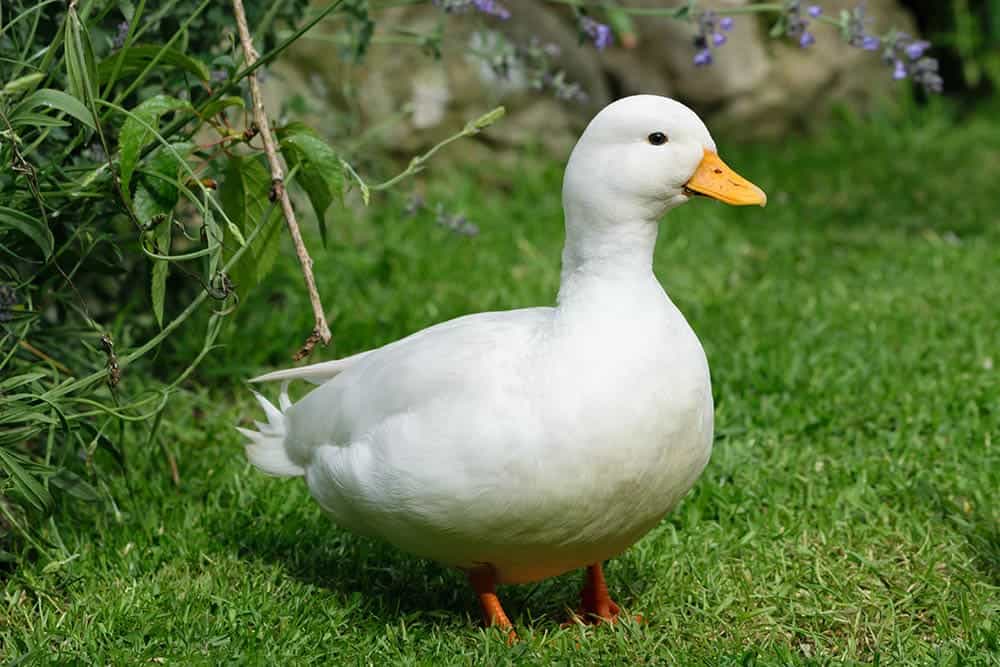Many people are not overly familiar with duck breeds beyond the typical Mallard. However, the Call Duck is an interesting, tiny duck that was developed from this better-known duck. They have a rich history and are popular still today because of their cute appearance and personable manner. Keep reading for more information about the Call Duck.

Quick Facts about Call Ducks
| Breed Name: | Call Duck |
| Place of Origin: | Netherlands |
| Uses: | Decoration, pets, hunting (rare) |
| Drake (Male) Size: | 22–26 ounces |
| Hen (Female) Size: | 18–20 ounces |
| Color: | Apricot, bibbed, black, blue fawn, dark silver, magpie, mallard, pied, silver, white |
| Lifespan: | 4–8 years |
| Climate Tolerance: | Any |
| Care Level: | Easy |
| Production: | Low |
Call Duck Origins
The Call Duck was created from selective breeding of the Mallard Duck. They were initially developed in the Netherlands as early as the 1600s. However, they fell from popularity and became quite rare until breeding programs brought the breed back in the 20th century. Modern Call Ducks were primarily developed in the British Isles from what remained of the Dutch lines of Call Ducks.

Call Duck Characteristics
These ducks are the smallest of all domestic ducks, weighing in at under 2 pounds when full-grown, with some adults barely getting larger than 1 pound. They are considered a bantam duck breed, which means they are in the smallest classification. They tend to be easy to care for, although they do require care to ensure they are safe due to their small size.
Many people find Call Ducks to be ideal starter ducks since they don’t require much space. They are often considered to be great ducks for children as well. They are sociable and sweet ducks that, with proper handling and socialization, usually enjoy spending time with people. They make great ducks for ornamental ponds due to their petite, cute appearance and their trust of humans.
These ducks were originally developed as decoys or natural duck calls to attract wild Mallards for hunting. The calls of the Call Duck would attract wild ducks from all around. This means that Call Ducks can be talkative ducks, so don’t be shocked if you end up with ducks that seem to enjoy hearing themselves call and quack.
Call Duck Uses
It’s rare for hunters to use actual Call Ducks for duck hunting anymore, instead preferring to use artificial duck calls. In fact, it’s illegal to use live ducks for this purpose in many areas. Call Ducks lay small eggs that aren’t ideal for eating, and the small size of the birds themselves means they aren’t ideal as meat animals. Most people who keep these birds keep them as ornamental pets or for showing.

Call Duck Appearance & Varieties
Most Call Ducks are primarily white. However, there are 10 colors and color combinations that are accepted according to the standard for the breed. Here are some of the accepted Call Duck colors.
Bibbed
Bibbed Call Ducks have slate blue feathers with some darker markings. The tail is typically a hue of blue or lavender.
Blue Fawn
Blue fawn birds have a dark grey-blue neck and head with lighter colored grey-blue feathers on the body and tail.
Magpie
Also sometimes called Harlequin, Magpie is a color combination of white with black markings.
Mallard
Mallard is the color combination most frequently associated with Mallard Ducks and it consists of a metallic green head, a white ring around the neck, and accents of brown, tan, blue, buff, and black on the body and tail.
Pied
Similar to Magpie, Pied consists of a primarily white body with well-defined patches of another color throughout. This second color is typically brown, black, or blue.

Population, Distribution & Habitat
There are no notable wild populations of the Call Duck. However, they are accessible due to their popularity. They are especially popular in Europe and the US. These are usually not the ducks you see living feral in parks, though. They are often kept by private citizens on their own property.

Are Call Ducks Good for Small-Scale Farming?
Cute as they may be, Call Ducks are not a good pick for small-scale farming. They have little value as meat or egg layers, with females usually only laying around two dozen small eggs annually. If you’re simply looking for a small duck to liven up your pond, the Call Duck may be the perfect match.
See also:
Featured Image Credit: jjvxphotography, Shutterstock
